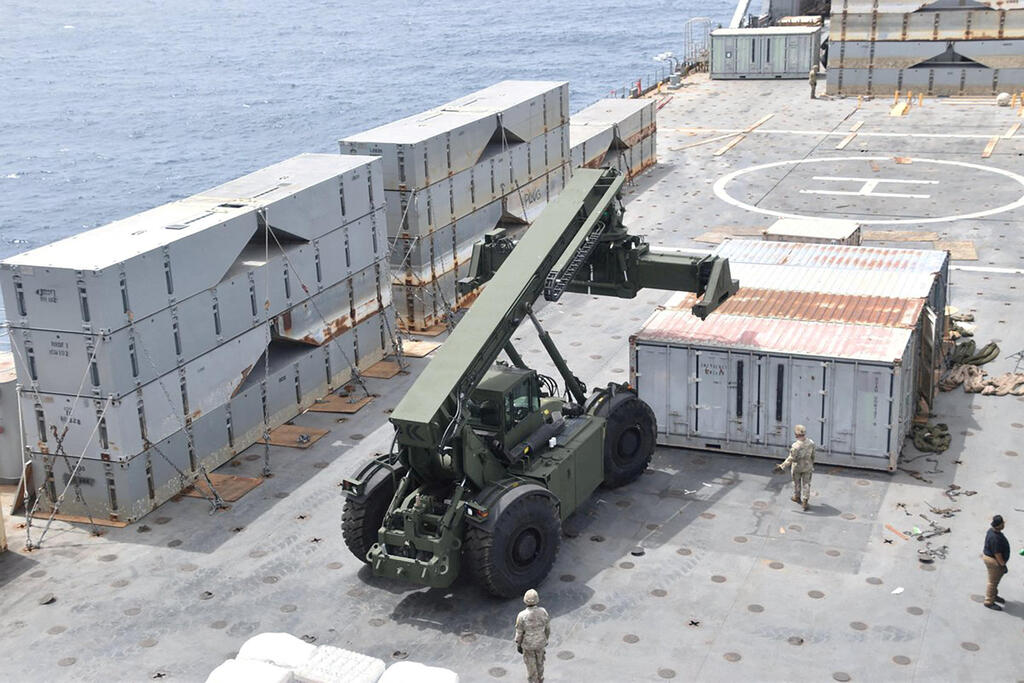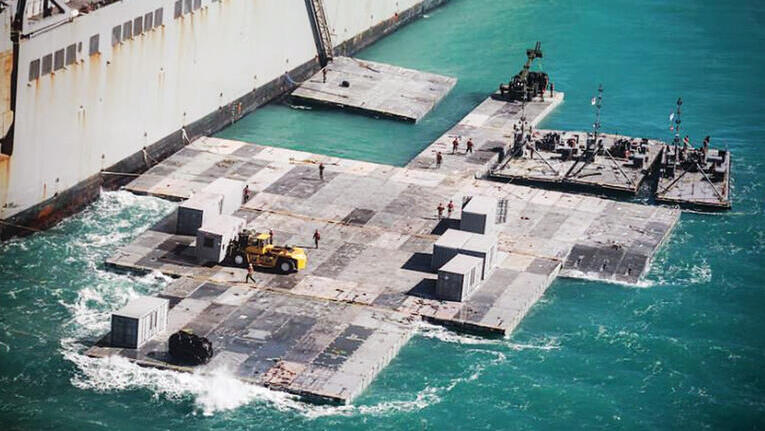Getting your Trinity Audio player ready...
The U.S. built Gaza floating pier could become operational as early as Friday, to be used to deliver humanitarian aid into the Strip, amid delays in aid transports since the Israeli offensive on Rafah began. The aid is currently undergoing security checks in Cyprus.
Ships will transport the aid to a few kilometers off the coast of Gaza where it would be unloaded, repacked and placed onto smaller vessels able to carry between 5 and 15 loads, and brought to the pier. From there the aid will be transported by trucks into the hands of the UN World Food Program.
Dan Dieckhaus, response director for USAID told reporters that the humanitarian situation in the Strip remains dire. “Humanitarian conditions are deteriorating, and insecurity is escalating, particularly in Rafah, and civilians are suffering,” he said. “More than half the population in northern Gaza is facing catastrophic levels of food insecurity,” he said adding that nearly 30% of the children in that area of Gaza are severely malnourished.
Dieckhaus said aid workers faced significant challenges to reach supplies and although some progress was made, more now has to be done adding that the U.S. was pressing Israel to do more to ensure the safety of aid workers and to open more border crossings into the Strip adding that the organizations receiving the aid will do so in an “independent, neutral, and impartial manner.”
2 View gallery


Construction of the floating pier to deliver humanitarian aid into Gaza
(Photo: Reuters)
Vice Admiral Bradley Cooper, deputy commander of the US Central Command (CENTCOM) said that U.S. troops would be providing logistics and that the purpose was to flood the area with humanitarian aid. "Any attack on those working on the mission is an attack on aid for the people of Gaza,” he said in response to a question.
British Foreign Secretary David Cameron said in a post on X that British aid was on its way to the Gaza pier. "This first shipment contains 8,400 shelter kits, which will be distributed to those most in need. We’re working with the US, Cyprus and other partners to get as much aid in as we can by all possible routes," he said.



